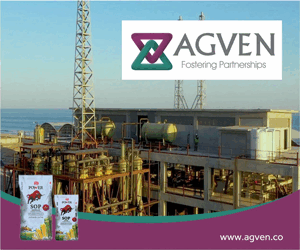- Web Desk Karachi
- Jun 30, 2025

Challenges to industrial investment in Pakistan
One of Pakistan’s major challenges is breaking away from outdated governance models and fostering a business climate that stimulates local investors to spur the growth of vibrant and competitive industrial sector.
Falling interest rate would typically boost private investment, but experts and business leaders remain skeptical. They argue that that expensive bank credit is just one of many factors — if at all — hindering industrial investment.
To combat hyperinflation, the State Bank of Pakistan maintained a high policy rate of 22.9 per cent from June 2023 to May 2024. Over the next five months, it reduced the rate by 8 per cent to the current 15 per cent. This monetary easing coincided with a sharp drop in inflation which fell from a record high of 39.9 per cent in May 2023 to 7.2 per cent in October 2024.
The current Economic Survey reveals that Pakistan’s private investment rate in financial (FY-24) stood at 15.8 per cent, one of the lowest in the region. In comparison, India’s rate is 32 per cent, more than double of Pakistan’s. Historically, Pakistan’s average investment rate from 1960 to 2024 has been 17 per cent.
“The country desperately needs to boost private domestic investment, but this demands more than government appeals, cheaper bank loans or fancy conferences in five-star hotels”, remarked a prominent tycoon, speaking off the record about the potential impact of State Bank of Pakistan’s policy shift. “It requires building the capacities of public and private stakeholders to implement business environment reforms that eliminate barriers, reduce costs and risks, encourage competition and promote social inclusion”.
An economic policy expert lamented missed opportunities to unlock Pakistan’s economic potential. “Despite abundant resources, a dynamic entrepreneurial spirit, a growing market, ample scope for balancing, modernization, replacement (BMR), a workforce eager to upskill, and substantial idle capital seeking stable returns, industrial investment remains stifled. This not only hampers GDP growth but also undermines its quality”, he observed.
“The country lacks the fundamental pre-requisite for industrial growth: a conducive business environment”, he explained. “This eco-system is shaped by the interplay of policies, laws, institutions, and regulations that govern business activities, as well as by the mechanisms through which government policies and institutional frameworks influence key stakeholders. These stakeholders include government agencies, regulatory bodies, and business associations, civil society platforms and trade unions”, he added.
A former governor of the State Bank of Pakistan attributed the business community’s reluctance to invest in manufacturing projects to a deep-seated trust deficit. He cited numerous instances where abrupt official policy changes imposed significant costs on investors but described the recent renegotiation of independent power production (IPP) agreements as a blow to investor confidence on entirely different scale. “Business leaders impacted by these revisions say it has rekindled bitter memories of the nationalisation policies of the 1970s”, he noted.
Dr Nadeem ul Haque, former Vice-Chancellor of Pakistan Institute of Development Economics, a longstanding critic of the business community’s reliance on government favours, deemed the local private sector’s reluctance to invest in industry entirely rational. “Why would anyone risk locking in capital amid such policy uncertainty, especially when the entire system seems stacked against businesses?”, he countered.
“Like it or not, investible funds will always gravitate towards low-risk avenues offering decent returns”, remarked an analyst, alluding at monies being directed toward real estate, the capital market or trade.
“In the end, it’s not persuasion, but the profit expectations that determine the direction of capital flow”, he added.
Discussing the administrative barriers to investment, a renowned economist shared the story of a potential investor. “A friend, returning to Pakistan after living and working abroad for 20 years, was eager to start a restaurant in Lahore. He completed the feasibility, secured funds, and found a location. However, after months of navigating bureaucratic hurdles, he abandoned his plan. He told me he needed approval from 10 different government departments, in addition to dealing with extortionists in the area”.
A business leader expressed about foreign investors stepping in to fill the investment gap, noting that overseas investors are understandably more cautious and typically follow local investment rather than lead it. To illustrate his point, he shared an anecdote: “At a grand foreign investment conference in Islamabad in 2018, attended by business delegations from several friendly countries, there were speeches lauding Pakistan as an ideal investment destination. During the question-answer session, a member of Korean delegation stood up and declared his willingness to invest. However, pointing to his Pakistani counterpart beside him, he added, “But he isn’t ready to invest here”.
Musadaq Zulqarnain, Chairman of Interloop, called the recent rate cuts a “positive step” but emphasised ongoing hurdles for manufacturers, particularly high business costs and the energy crisis. He urged further rate reductions, energy reforms, and a stable political and economic environment. “Without a sustainable policy framework and unified political commitment through a consensus-driven economic agenda, significant industrial investment is unlikely,” he cautioned.






